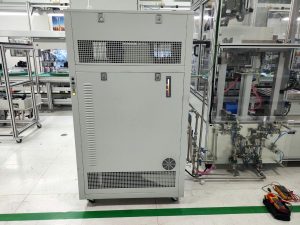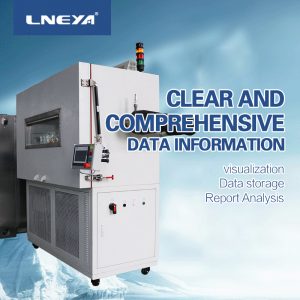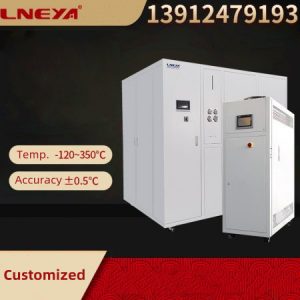Istruzioni per l'uso della camera di prova a bassa temperatura
Il low temperature test chamber is a necessary test equipment in aviation, automobile, household appliances, scientific research and other fields. It is used to test and determine the parameters and performance of electrical, electronic and other products and materials after the temperature environment changes in high temperature, low temperature, or constant test.
Il low temperature test chamber can be used to check and determine the temperature cycling changes of electrical, electronic products or materials, and produce the adaptability of storage and use under environmental conditions. The equipment adopts forced air circulation to maintain the uniformity of temperature in the working room, with green environmental protection, micro-computer control, temperature digital display, adjustable temperature in the box, high-density insulation layer, good insulation effect, energy saving.
Il low temperature test chamber should never be used for testing the following objects or those containing them:
(1) Explosives:
1. Nitroglycol (ethylene glycol dinitrate), nitroglycerin (propylene glycol trinitrate), nitrocellulose and other explosive nitrates.
2. Trinitrobenzene, trinitrotoluene, trinitrophenol (picric acid) and other explosive nitro compounds.
3. Peracetic acid, methyl ethyl ketone peroxide, benzoyl peroxide and other organic peroxides.
(2) Combustibles:
1. Spontaneous combustion:
Metals: lithium, potassium, sodium, yellow phosphorus, phosphorus sulfide, red phosphorus.
Cerules: calcium carbide (calcium carbide), phosphatized lime, magnesium powder, aluminium powder, sodium bisulfite.
2. Categories of oxide properties:
(1) Potassium chlorate, sodium chlorate, ammonium chlorate and other chlorates.
(2) Potassium peroxide, sodium peroxide, ingot peroxide and other peroxide salts.
(3) Potassium peroxide, sodium peroxide, barium peroxide and other inorganic peroxides.
3. Flammables:
(1) Ether, gasoline, propylene oxide, carbon disulfide and other substances whose ignition point is less than – 30 C.
(2) Common ethane, oxidized alkene, acetone, benzene, methyl ethyl ketone and other substances whose ignition point is above – 30℃ but below 0℃.
4. Flammable gases:
Hydrogen, acetylene, ethylene, methane, ethane, propane, butane and other gases that may burn at 1 atmospheric pressure at 15 C.
Raccomandazioni correlate
-
Automotive antifreeze test test temperature control system
989When it comes to car antifreeze, we all know that its main function is to prevent the coolant from freezing and cracking the radiator and freezing the engine cylinder block or cover when we stop in the cold winter. Make the cooling system in the ...
Visualizza i dettagli -
L'unità di refrigerazione a glicole etilenico ha sferrato un forte attacco e ha creato il marchio LNEYA in 12 anni
1297Performance enhanced positioning When performing the cooling and heating reaction, in many cases, the refrigerant cannot cool the object to be cooled by itself. Therefore, we need a coolant (or refrigerant) to cool the refrigeration system in a re...
Visualizza i dettagli -
What should be paid attention to in the reaction kettle nitric acid cooling system?
937After purchasing the nitric acid cooling system of the reactor, many users often do not notice the details that need to be paid attention to when the equipment is turned on. It is necessary to check whether there are few pieces of the product, wh...
Visualizza i dettagli -
Performance Test of Household Refrigerator Designed by Environmental Chamber Sales
1278Many performance items of household refrigerators are tested under a specific environmental condition. The thermal condition of the air distribution in the environmental chamber is more severe than that in the general artificial constant temperatu...
Visualizza i dettagli
 Refrigeratori industriali LNEYA Produttore Fornitore
Refrigeratori industriali LNEYA Produttore Fornitore













